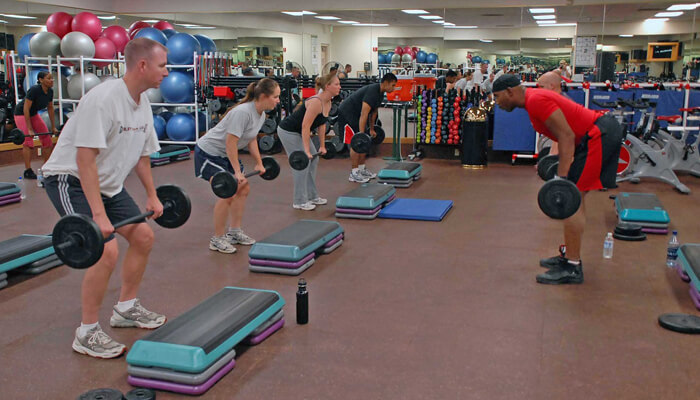Strength Training Tips | How To Increase Weights
Table of Contents
Heavy weightlifting should be an integral part of your workout routine if you want to build muscle and increase strength. The latter depends on the effort you put on overloading your muscles; the stress placed on them must increase gradually to keep challenging them. How to improve strength and power, you ask? Start weight lifting at your gym. Strength training offers several ways of muscle building and increasing power. You can achieve progressive overload by increasing reps and sets, reducing rest breaks, focusing on form, and moving on to more challenging variations. Nonetheless, experts say that the most effective way is to lift heavyweights.
It happens to be the easiest way to track your progress over time. If you’re wondering how to lift heavier weights, the answer is progressive overload, which is a part of every training plan created by a professional. Knowing how to safely increase weight is important to avoid injuries and reach your goals in time. The answer is to work with a professional trainer. Join FITPASS to visit a network of gyms and fitness studios in your city as well as 15+ others in India.
Choosing The Right Starting Weight

How much weight should I lift for my size is one of the first questions that come to mind when starting weight training or strength training. The simplest answer is that the reps dictate the load. Start by deciding the number of reps you want to perform in each set and then choose a weight that allows you to perform all the reps with perfect form.
The number of reps to perform depends on your goals and the number of sets. For the best results in strength development, choose from 2-6 sets of 6 or fewer reps of heavy lifting. For moderate weight lifting, go for 3-6 sets of 8-12 reps to build muscle size. If your goal is to improve muscular endurance, do 2-3 sets of 12 or more repetitions. It will increase your muscles’ ability to hold out for longer.
Common Weightlifting Practices

The bulk of exercises in most training programs are performed for 8-12 reps, as your trainer must have told you some time or the other. There are a few following reasons for it:
- Before working at max strength with very heavyweights, you must build a solid foundation in this range. Start with weights heavier than you’ve lifted before but no so heavy that you can’t complete more than a couple of reps
- This range is time-effective; allows you to work out in short periods
- This range focuses primarily on muscle growth but also helps improve strength and endurance
Most Exercises performed in this range are safe. Lifting heavy weights for lesser reps for biceps and triceps can overstress the joints.
Start with whatever weight category you feel you can lift but can’t be sure of the number of reps you can perform with it. Let’s say you weren’t able to perform 8 reps or you could keep going after 12 reps. Take a short break and repeat with a lighter or heavier set of weights accordingly. You have to find a weight that’s doable but challenging.
How Often to Increase Weight When Lifting

In other words, how to know if you’re ready for a weight increase once you’ve found and conquered the initial set of weights. In the beginning, the body responds quite well to strength training and you will witness a significant increase in your power levels. However, it slows down with time. This happens for, say, the first two weeks, because of neurological changes as your brain and muscles start to function with better coordination, the body responds well to strength training.
Not able to lift heavyweights in the gym? You’re probably overdoing it. Every person has different limits when it comes to the gains the body can sustain. The body grows much faster when you’re further away from your upper limit. The stronger you get, the progress naturally slows down. Irrespective of your weight training experience, increasing the weight on time is essential for good results. When you can perform all the reps and sets with ease and without compromising form, it’s time to increase the weight.
Safety Tips When Lifting Heavy

How to avoid injuries is probably a more important question than how to increase weight lifting power. Increasing the weights you lift is a great way to improve mental as well as physical strength but in the end, it all comes down to your goals. Consider this - increasing 5 KGs of weight for shoulder raises might be the same as increasing 50 KGs with the deadlift. But the percentage increase is quite different.
The availability of weights, especially when working out at home might mean a larger increase than you want. Always keep your form before weight and listen to your body. Do as many reps and sets that do not affect your form. Know that there are better ways to progress than increasing weights if you’re not ready. Do not make adding weights every week or fortnight a goal. For example, if you get stuck on an isolation exercise, add sets and reps and focus on your form rather than increasing weights. This will eventually allow you to lift heavier weights.
How to increase dumbbell weight?
To increase dumbbell weight, progressively add small increments each week. Focus on form and strength building before advancing to heavier weights.
How to increase endurance?
Increase endurance through consistent cardiovascular exercise like running, swimming, or cycling. Gradually extend the duration of your workouts to improve stamina.


